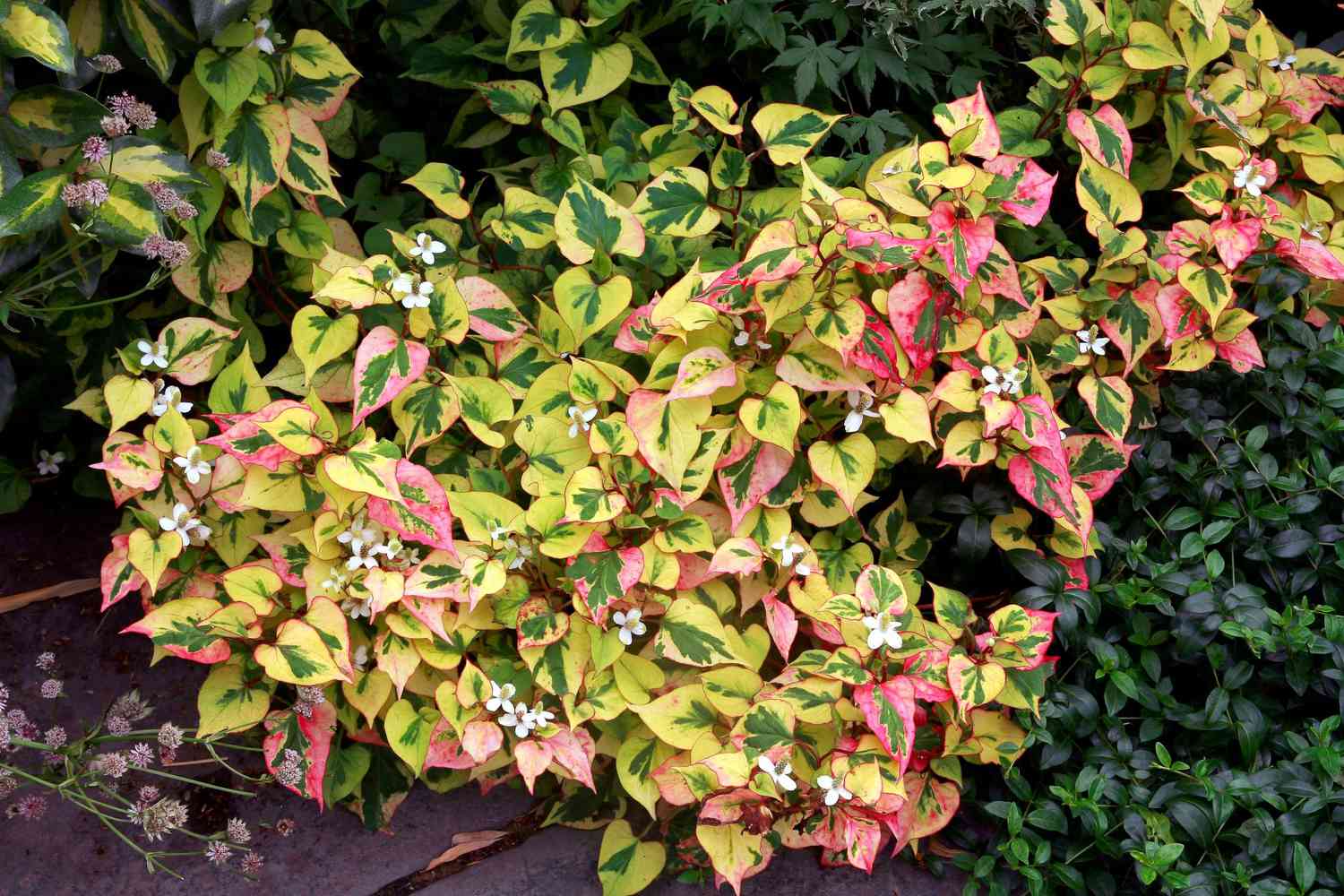
What makes the Chameleon Plant so unique? This fascinating plant, known scientifically as Houttuynia cordata, stands out for its vibrant, multi-colored leaves. Imagine a garden filled with shades of green, yellow, red, and even purple! But the Chameleon Plant isn't just about looks. It has a strong, distinctive aroma that some people love and others find a bit too intense. This hardy plant thrives in various conditions, from full sun to partial shade, and can even grow in waterlogged soil. Its resilience makes it a favorite among gardeners. Plus, it’s not just for show; in some cultures, the leaves are used in cooking and traditional medicine. Curious yet? Let’s dive into 15 fascinating facts about this colorful wonder!
Key Takeaways:
- Chameleon Plant, native to Asia, boasts vibrant, heart-shaped leaves in a mix of colors. It prefers moist, shaded areas and offers medicinal properties, edible leaves, and air purification benefits.
- To care for Chameleon Plant, ensure regular watering, occasional pruning, and fertilization. Watch out for invasiveness, pests, diseases, and cold sensitivity in colder climates.
What is a Chameleon Plant?
The Chameleon Plant is a fascinating species known for its vibrant colors and unique characteristics. Native to Asia, it has captured the interest of gardeners and botanists alike. Let's dive into some intriguing facts about this remarkable plant.
Unique Appearance
The Chameleon Plant is not just another green leaf in the garden. Its appearance is striking and varied.
- Colorful Leaves: The leaves of the Chameleon Plant can display a mix of green, yellow, red, and even pink hues. This colorful display is why it’s called the Chameleon Plant.
- Heart-Shaped Leaves: The leaves are heart-shaped, adding a touch of charm to its already captivating look.
- Small Flowers: It produces small, white flowers that are often overshadowed by its vibrant foliage.
Growth and Habitat
Understanding where and how the Chameleon Plant grows can help in cultivating it successfully.
- Native to Asia: This plant originates from regions in Asia, particularly China, Japan, Korea, and Southeast Asia.
- Prefers Moist Soil: It thrives in moist, well-drained soil, making it ideal for gardens with water features or damp areas.
- Shade Tolerant: While it can grow in full sun, it prefers partial shade, which helps maintain its vivid colors.
Uses and Benefits
Beyond its beauty, the Chameleon Plant offers several practical uses and benefits.
- Medicinal Properties: In traditional medicine, it’s used for its anti-inflammatory and antibacterial properties.
- Edible Leaves: In some cultures, the leaves are consumed either raw or cooked, adding a unique flavor to dishes.
- Air Purification: Like many plants, it helps purify the air by absorbing pollutants and releasing oxygen.
Care and Maintenance
Keeping a Chameleon Plant healthy requires some specific care practices.
- Regular Watering: It needs consistent moisture, so regular watering is essential, especially during dry periods.
- Pruning: Pruning helps control its spread, as it can become invasive if left unchecked.
- Fertilization: Occasional fertilization can promote healthy growth and vibrant colors.
Potential Issues
While the Chameleon Plant is relatively easy to care for, it does come with some potential issues.
- Invasiveness: It can spread rapidly and become invasive, outcompeting other plants in the garden.
- Pests and Diseases: It is generally resistant to pests and diseases, but overwatering can lead to root rot.
- Cold Sensitivity: In colder climates, it may die back in winter but usually regrows in spring.
The Chameleon Plant is a unique and versatile addition to any garden, offering both aesthetic appeal and practical benefits.
Final Thoughts on Chameleon Plants
Chameleon plants are fascinating. They bring vibrant colors and unique characteristics to any garden. These plants thrive in various conditions, making them versatile and easy to grow. Their ability to change colors with the seasons adds a dynamic touch to landscapes. However, they can be invasive, so regular maintenance is necessary. Despite this, their benefits often outweigh the challenges. They attract pollinators, improve soil health, and offer medicinal properties. Whether you're an experienced gardener or a beginner, chameleon plants can be a rewarding addition to your garden. Just remember to keep an eye on their growth to prevent them from taking over. With proper care, these plants can provide beauty and benefits for years to come. So, why not give chameleon plants a try? They might just become your new favorite garden feature.
Frequently Asked Questions
Was this page helpful?
Our commitment to delivering trustworthy and engaging content is at the heart of what we do. Each fact on our site is contributed by real users like you, bringing a wealth of diverse insights and information. To ensure the highest standards of accuracy and reliability, our dedicated editors meticulously review each submission. This process guarantees that the facts we share are not only fascinating but also credible. Trust in our commitment to quality and authenticity as you explore and learn with us.


